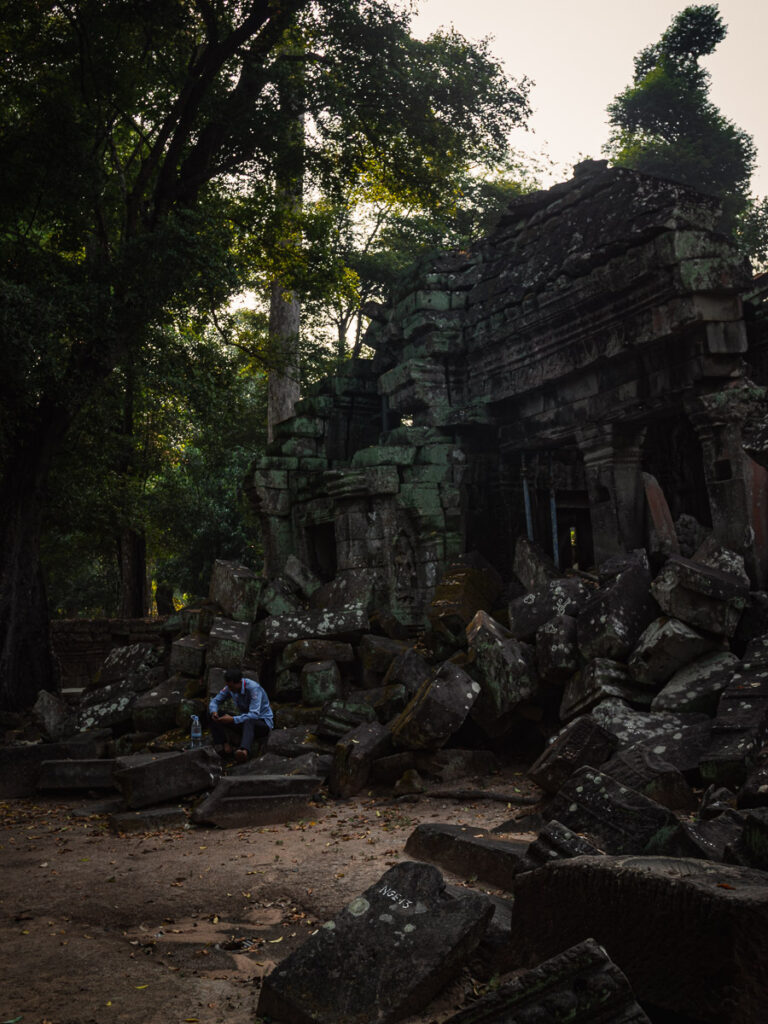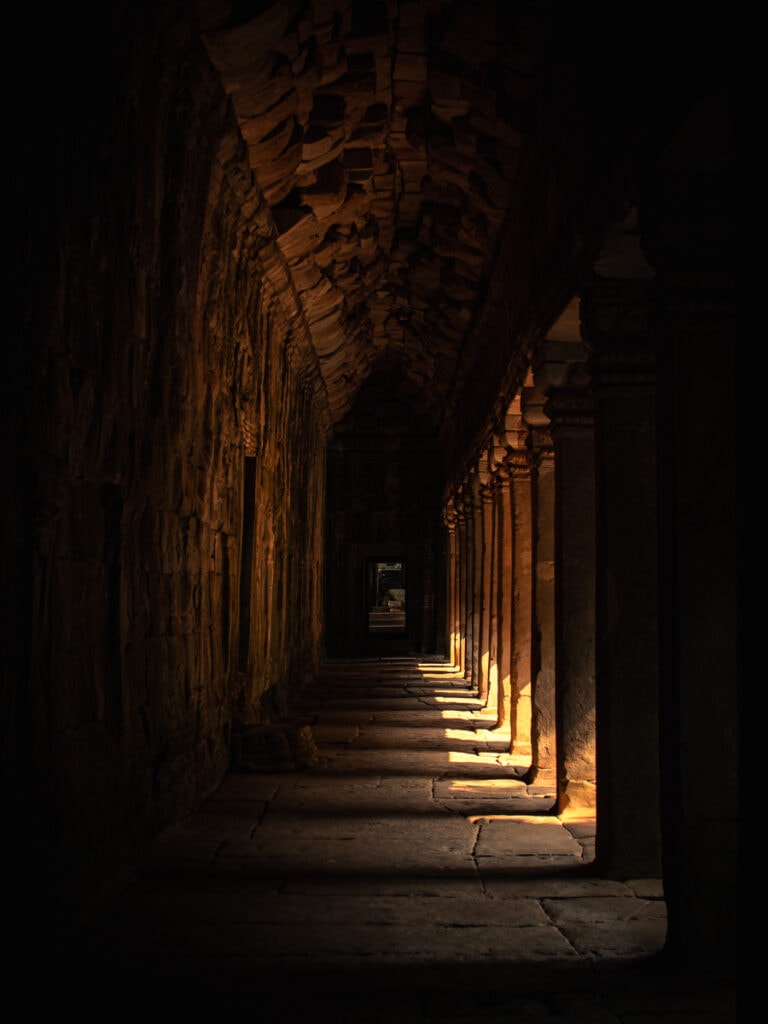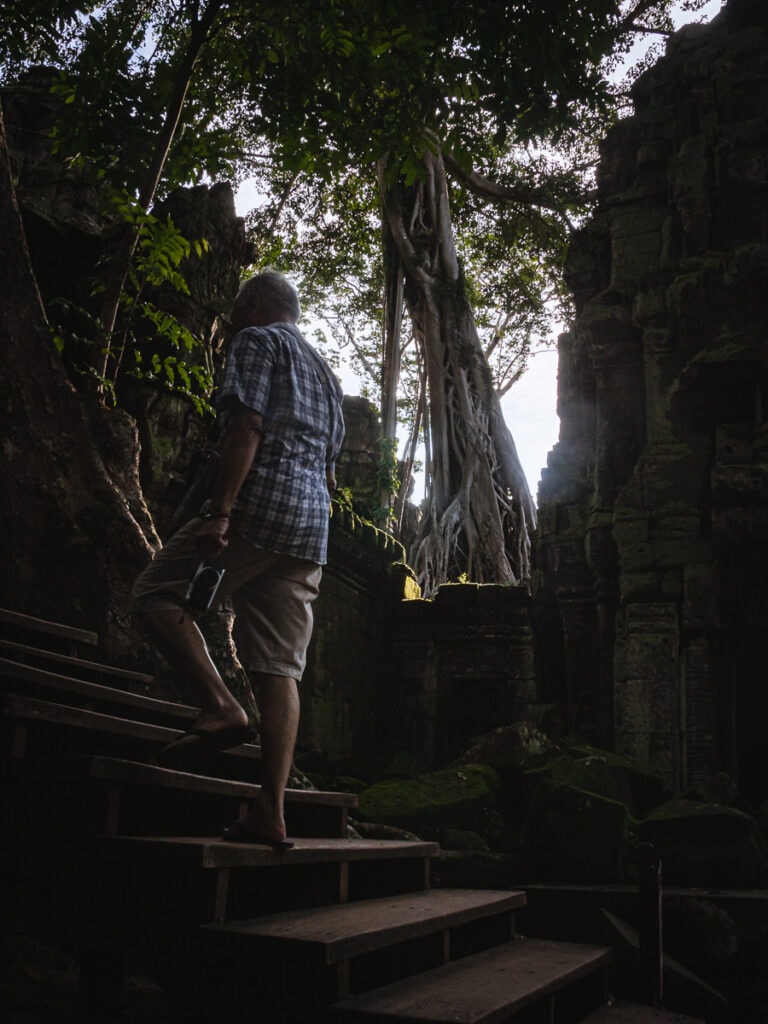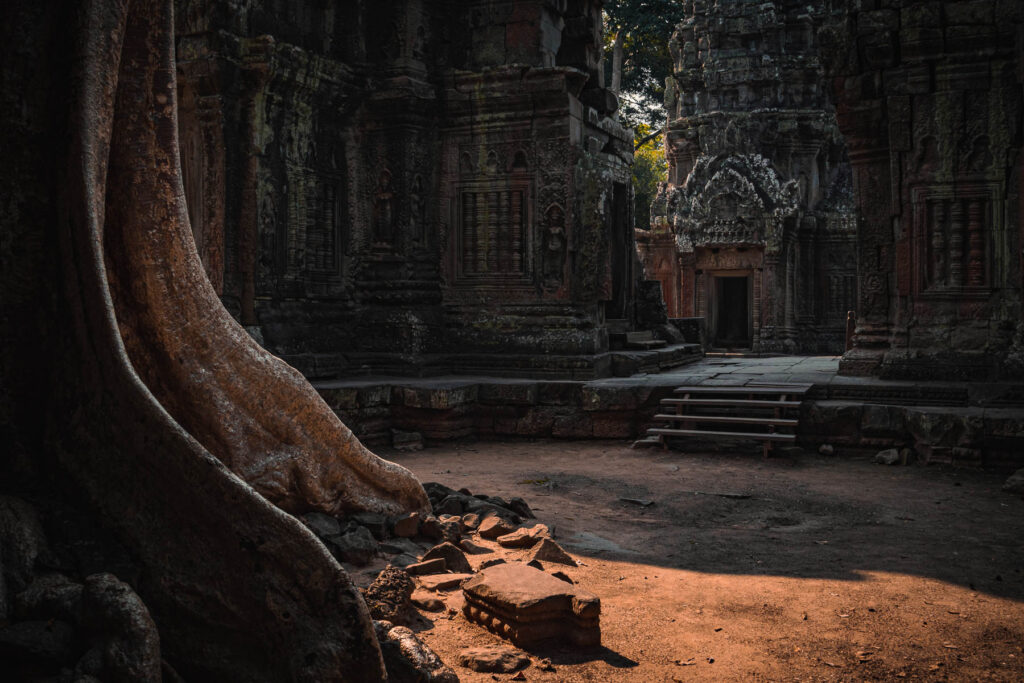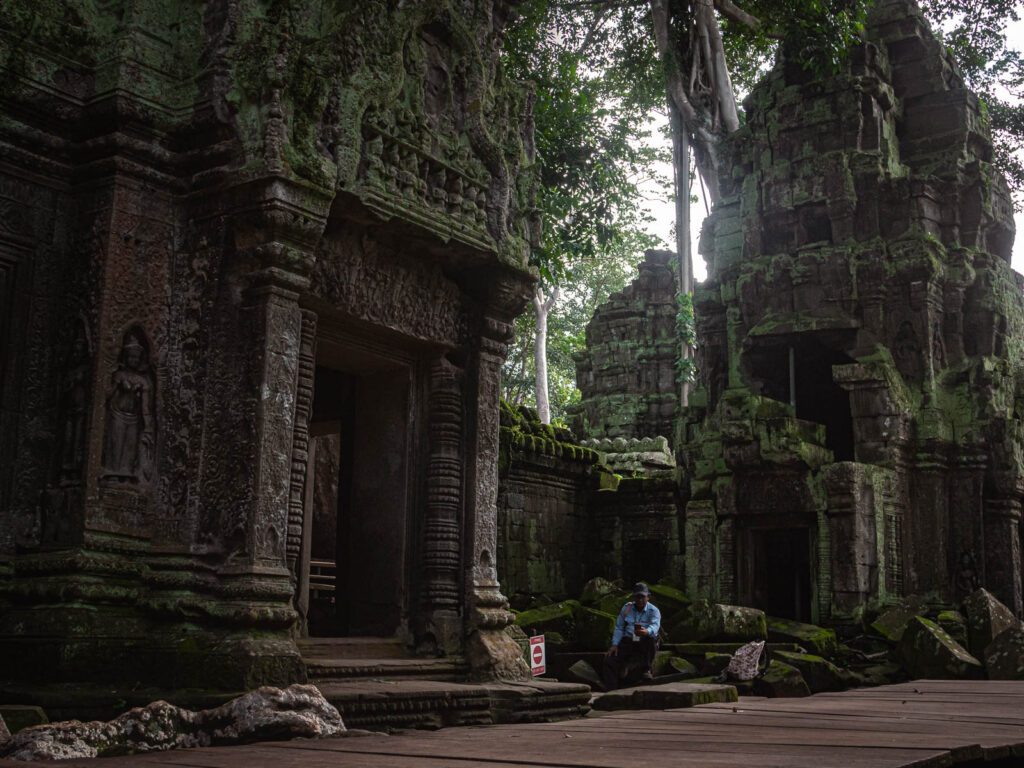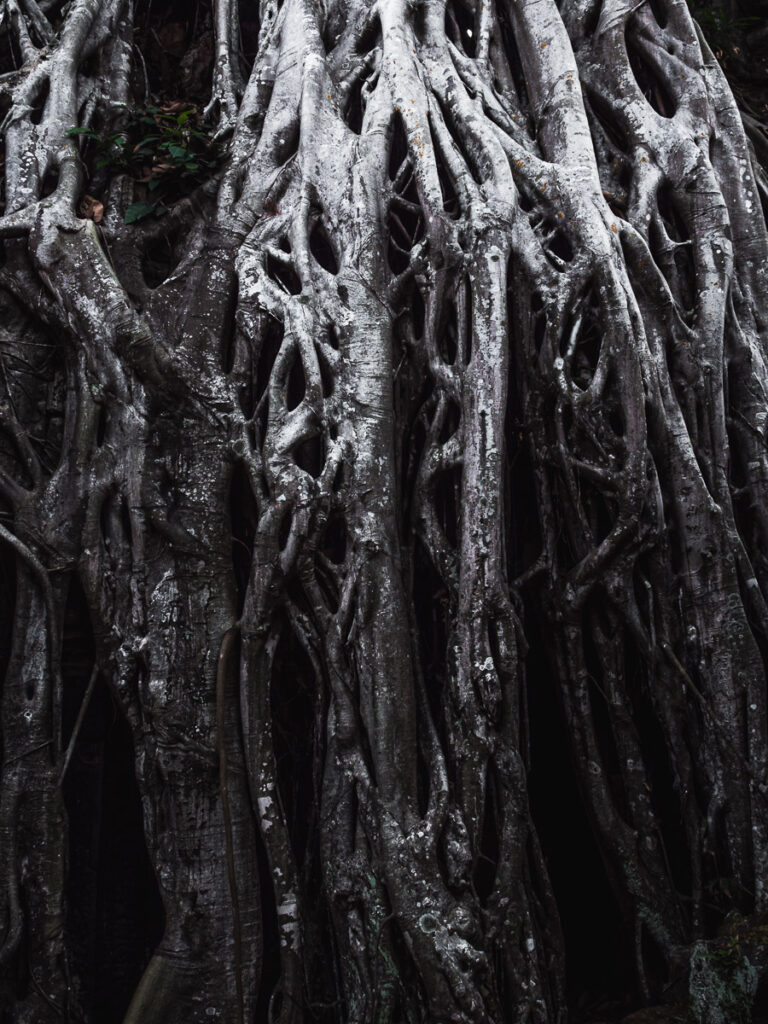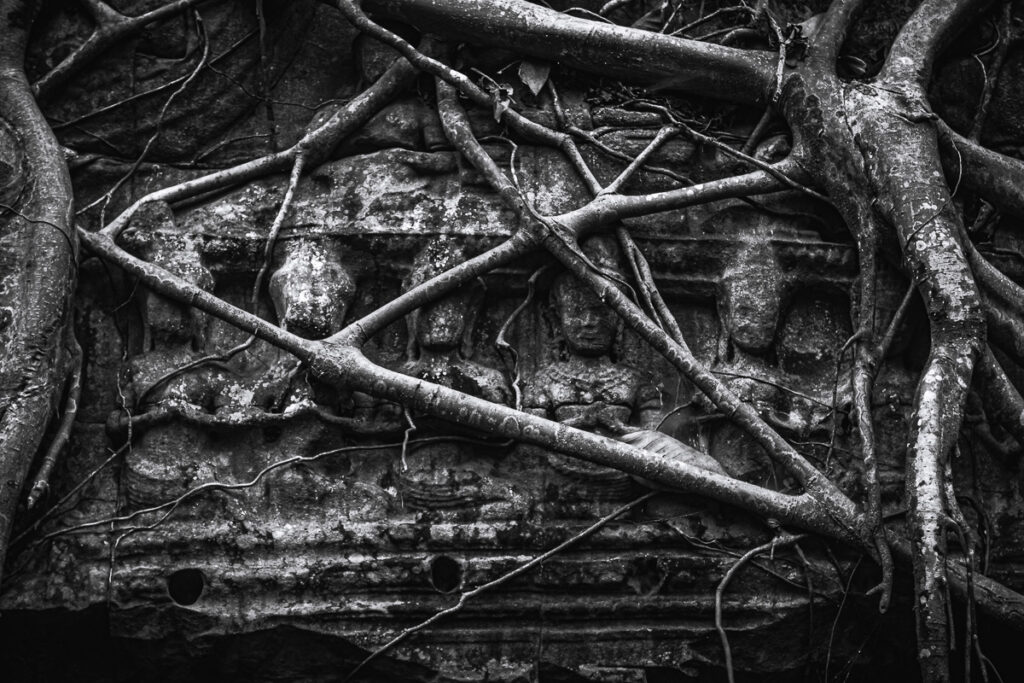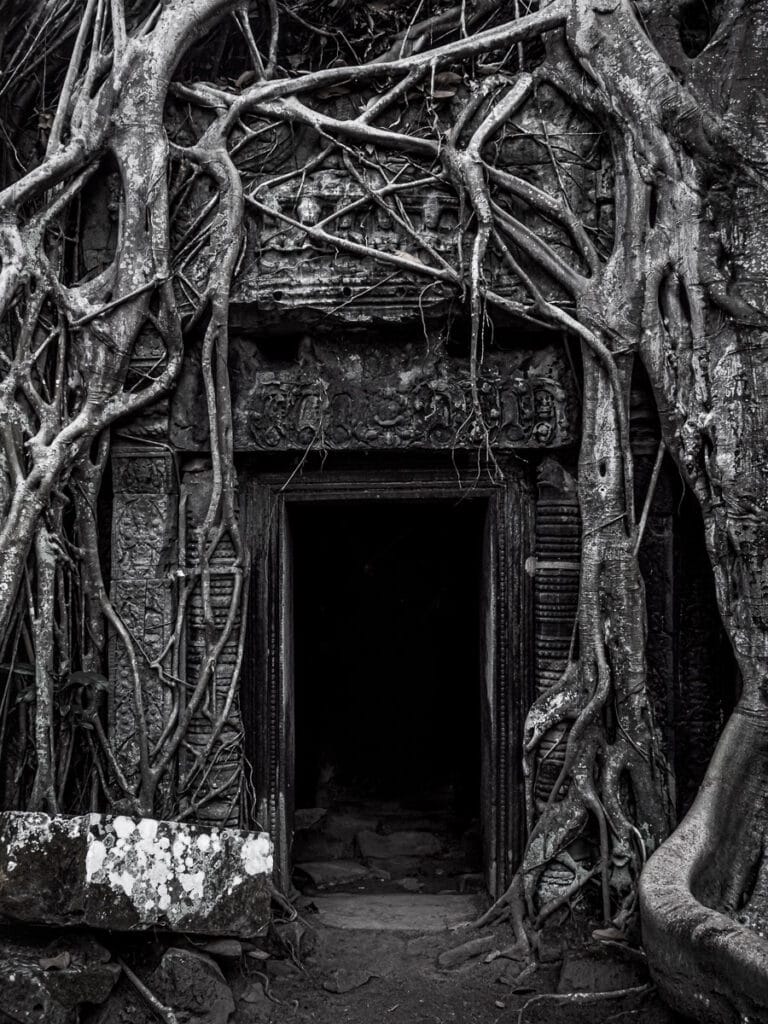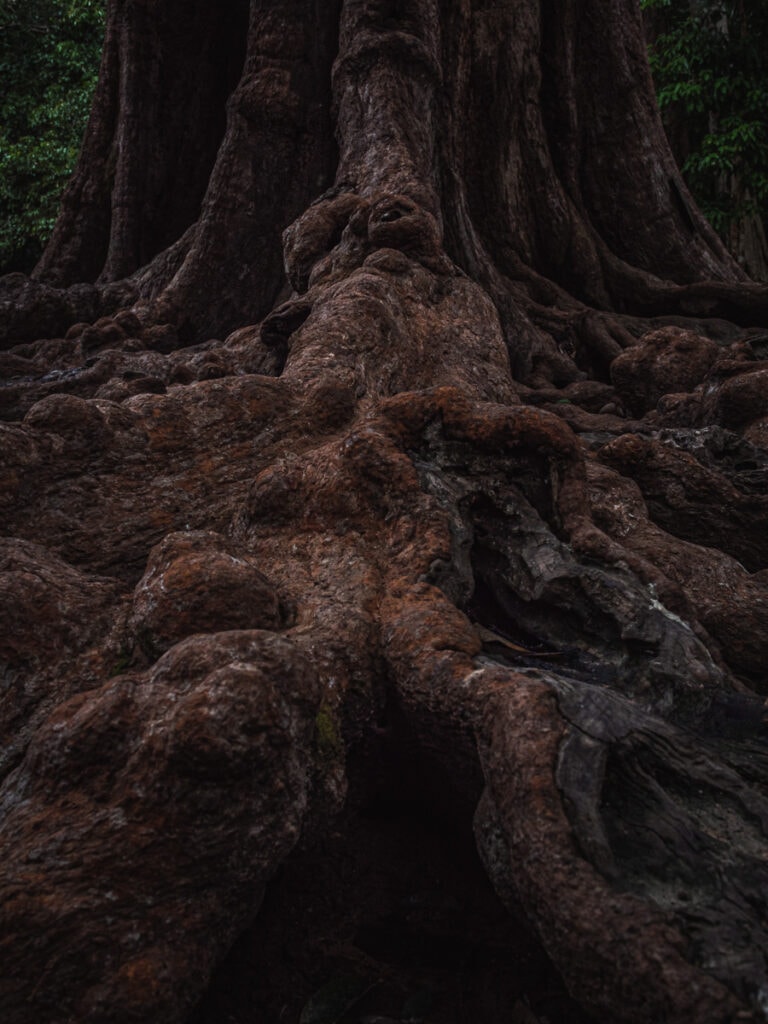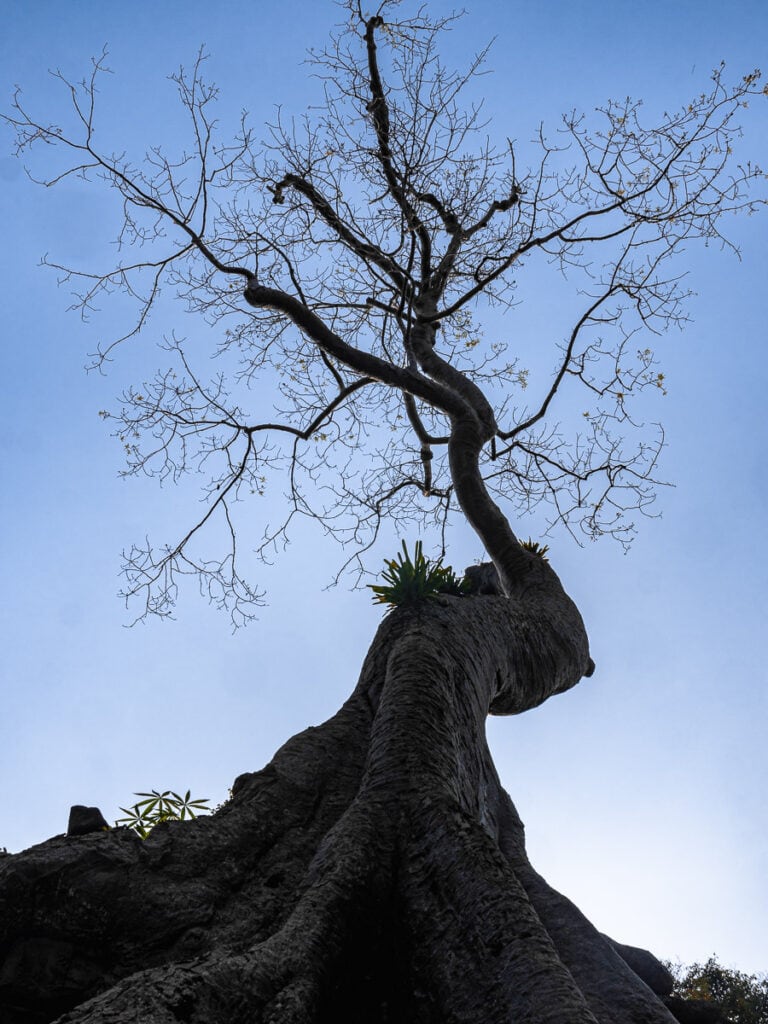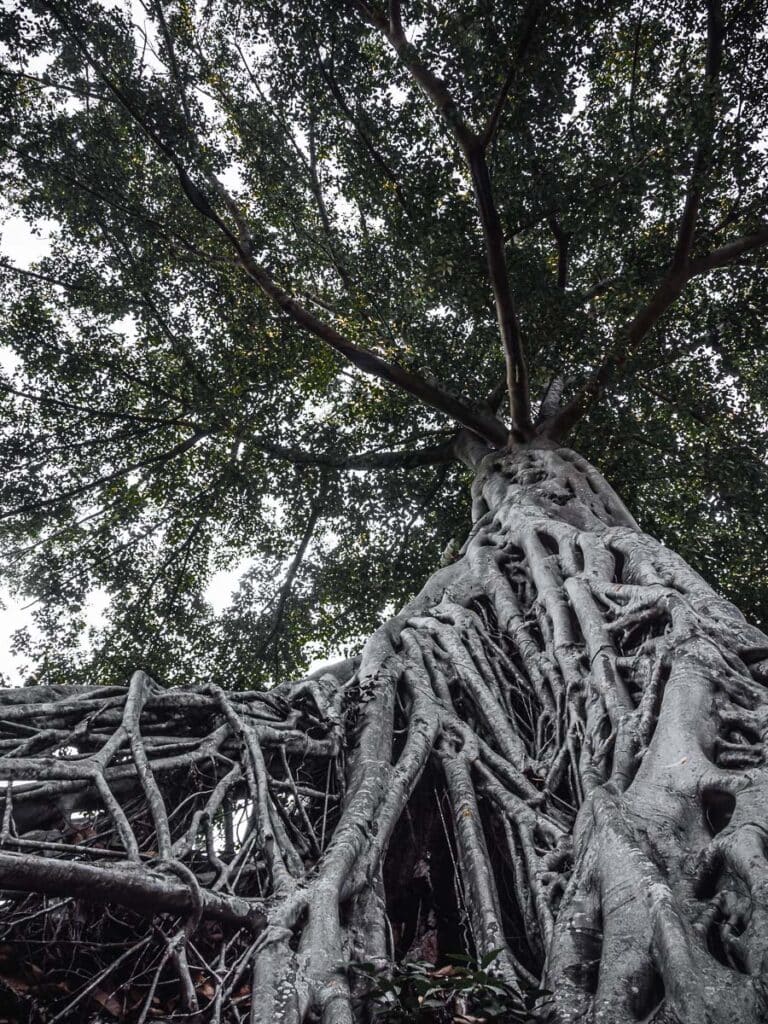
March , 2022
Ta Prohm | Angkor | Cambodia
Almost entirely swallowed by nature, Ta Prohm is one of most impressive temples and unique in Angkor. It was originally built in 1186AD, during the height of Khmer Empire, by the god-king Jayavarman VII. While older Angkor temples were Hindu temples, dedicated to Shiva and Vishnu, Ta Prohm was built as a Buddhist monastery and university.
Ta Prohm has the traditional Khmer temple structure which consists of a series of gradually smaller enclosures. The fifth one, which is the largest, is about 1.000 by 650 meters. At the center of the structure, we can find an elevated stone face of Prajnaparamita, the personification of wisdom, whose features were modeled after those of the king’s mother, for whom the temple was dedicated to.
During the golden days of the empire, Ta Prohm was home to more than 10.000 people, including some high priests and many Apsara dancers. Furthermore, the surrounding villages were home to 80.000 people, which provided services and supplies for the people living in Ta Prohm.
After the death of King Jayavarman VII, Ta Prohm continued to be an important part of the Khmer empire. As such, it was continually expanded under subsequent kings. Yet, the faces of many Buddha images were destroyed halfway through the 13th century when king Jayavarman VIII reinstated Hinduism as the official religion of the Empire. Only a few Buddha faces have survived.
Nevertheless, like all other temples in the area, Ta Prohm was completely abandoned and deserted in the 16th century following the fall of the Khmer Empire. For hundreds of years, the area was completely forgotten by humankind. As a consequence, nature slowly started to reclaim its land and throughout the following years, vegetation began to take over the temple’s structure.
When Angkor was rediscovered in the early 20th century by French archaeologists, most of Angkor temples had become overgrown throughout time. However, none of the temples were so deeply undertaken by nature as Ta Prohm. The temple’s ruins were totally enclosed by jungle and it seemed almost impossible to reverse this development.
At the same time, archeologists agreed that the vegetation was giving a unique mood and feeling to the temple. Therefore, the temple was intentionally left in the same way as it was found. Only the most necessary work to prevent further deterioration was done. Seems like nature had won this time.

